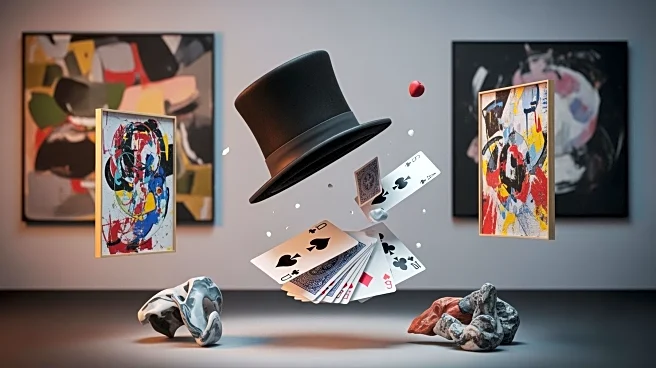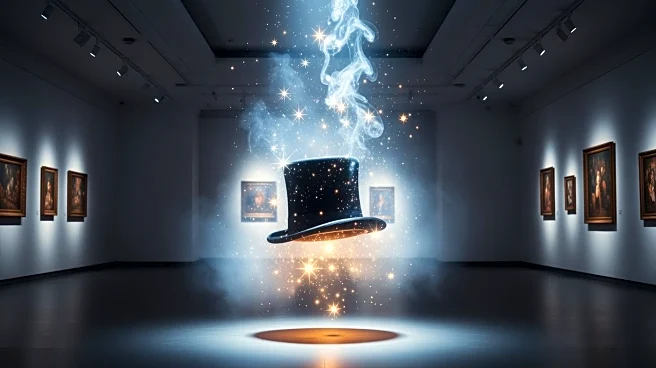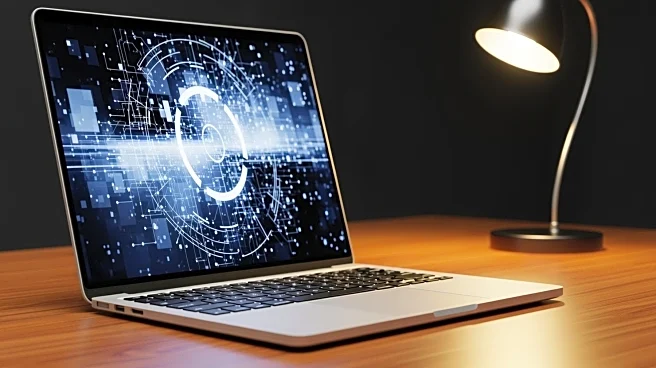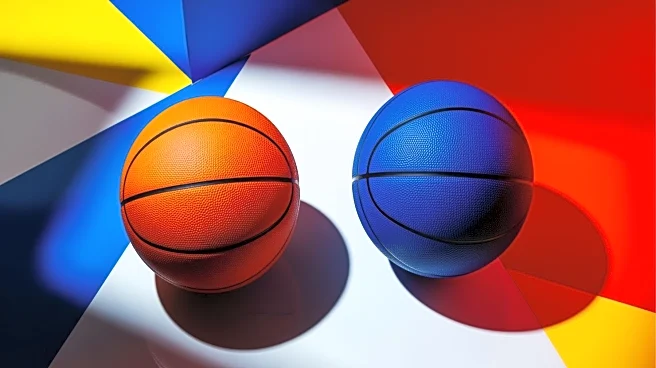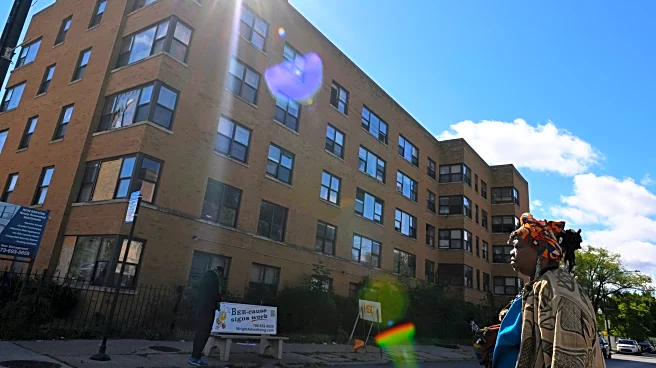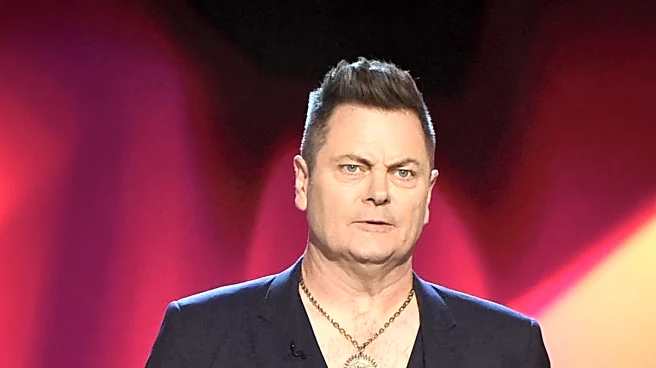What's Happening?
Jeanette Andrews, a professional magician turned artist, is set to have her first dedicated museum exhibition at the Elmhurst Art Museum in Illinois. Andrews has been exploring magic as an expressive medium,
combining the science of perception, coded messages, and the history of illusion. Her work includes performing parlor tricks designed by algorithms to investigate human versus machine creativity, re-performing historical magic tricks, and creating art inspired by CIA espionage techniques from the 1950s. Her recent commission, 'The Attestation,' at the MIT Center for Art, Science, and Technology, blends stage magic with social experimentation, showcasing her unique approach to art.
Why It's Important?
Andrews' work challenges traditional boundaries between art and magic, offering a fresh perspective on creativity and expression. By integrating elements of illusion and perception, her art invites audiences to reconsider the role of magic in contemporary culture. This exhibition not only highlights Andrews' innovative approach but also underscores the potential for interdisciplinary collaboration in the art world. As museums increasingly seek to engage audiences with diverse and interactive experiences, Andrews' work exemplifies how magic can serve as a powerful tool for artistic exploration and cultural dialogue.
What's Next?
The upcoming exhibition at Elmhurst Art Museum will provide a platform for Andrews to showcase her unique blend of magic and art to a broader audience. It is expected to spark discussions on the intersection of art, technology, and illusion, potentially influencing future exhibitions and collaborations. As Andrews continues to explore new creative spaces, her work may inspire other artists to incorporate elements of magic and perception into their practices, further blurring the lines between different artistic disciplines.
Beyond the Headlines
Andrews' exploration of magic as art raises questions about the nature of creativity and the role of technology in artistic expression. Her work prompts audiences to consider the ethical implications of using algorithms and machine learning in creative processes. Additionally, the historical context of magic and espionage in her art invites reflection on the cultural significance of illusion and deception, both in art and society.
